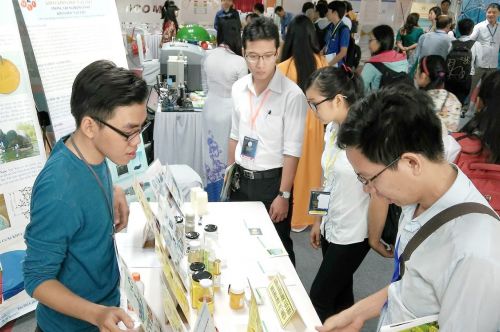Golden FDI flows amid the gloom

Phan Huu Thang, general director of the Ministry of Planning and Investment’s Foreign Investment Agency (FIA), referred to a list of more than 50 foreign-invested projects with a combined investment capital of $100 billion, which were under negotiations in terms of investment conditions.
“Our studies show that Vietnam’s two leading foreign direct investment (FDI) localities Ho Chi Minh City and Dong Nai province would attract huge numbers of FDI projects in 2009.
Ho Chi Minh City is considering four large-scale property projects worth $20 billion, while the latter is projected to licence $5 billion worth of FDI capital in 2009,” Thang said.
“Provinces and cities’ jobs now are to get relevant investment conditions ready including land, infrastructure networks and labour forces to welcome potential investors,” he added.
Thang’s optimistic anticipation of Vietnam’s FDI attractiveness came as the country enjoys an historic FDI peak of two decades since the nation opened up the economy to foreign investors.
FIA’s preliminary figures indicated that Vietnam’s newly pledged and expanded FDI capital in 2008 reached $64 billion, tripling 2007’s reported figures and six times higher than that of the 2006, which marked Vietnam’s introduction of the new Investment Law and the nation’s World Trade Organization (WTO) membership.
FIA figures also revealed Vietnam’s remarkable increases of disbursed FDI funds across the year to $11.5 billion compared to $8 billion in 2007 and $4.6 billion in 2006. Thang said that the gradual disbursement rate growth in 2008 was backed by immediate implementation of large-scale FDI projects in property, steel, oil and petrochemical sectors.
“I am most impressed by the reported $3.74 billion of expanded FDI capital between January and December, 2008 – an increase of 42.3 per cent over the previous year, reflecting successful operations of existing foreign businesses in the country,” Thang said.
The 2008 survey of Japanese External Trade Organization indicated that as many as 92.6 per cent of Japanese manufacturers and 88 per cent of Japanese non-manufacturers surveyed in Vietnam planned for expansion. They are the highest ratios in the Southeast Asian regions.
Japan Bank for International Cooperation also ranked Vietnam the third most attractive investment destination of Japanese investors for three consecutive years, after China and India.
“Five top reasons of Vietnam for promising prospect are inexpensive labour costs, market growth potential, risk diversification, excellent human resources and supply base for assemblers,” the bank reported.
According to Business Monitor International (BMI), which provides economic analysis of emerging markets worldwide, looking beyond 2009, FDI inflows should remain robust on the back of Vietnam’s solid macroeconomic fundamentals and continued attractiveness as an alternative to China for manufacturing operations.
Additionally, BMI forecast that FDI disbursement in infrastructure in Vietnam would remain strong in 2009 as foreign investors are really interested in building ports and power plants in Vietnam.


